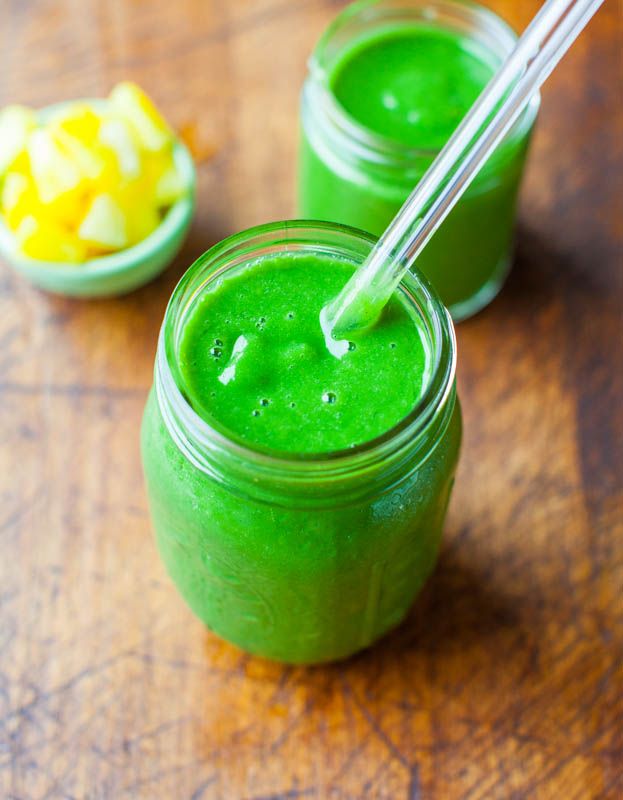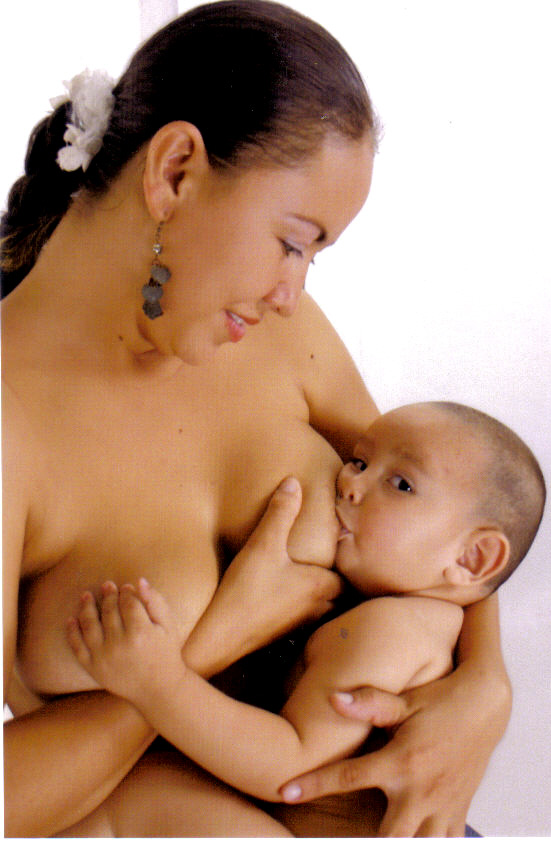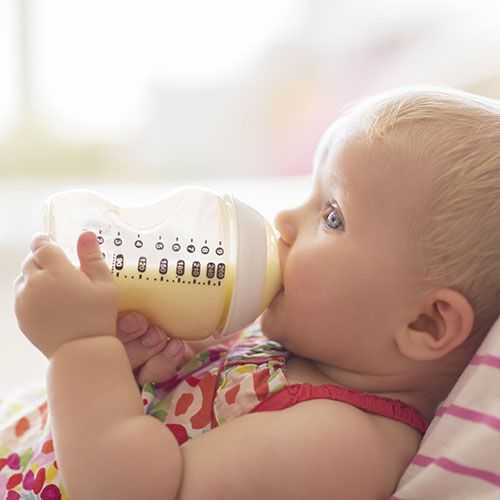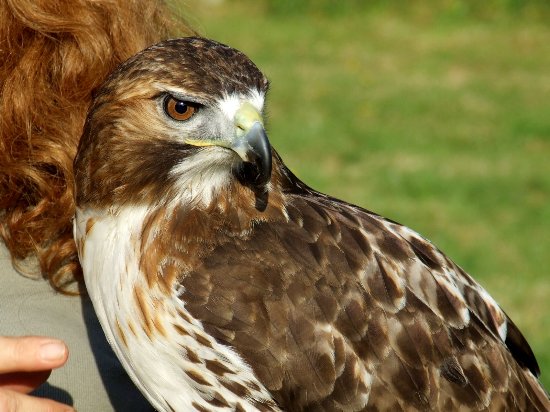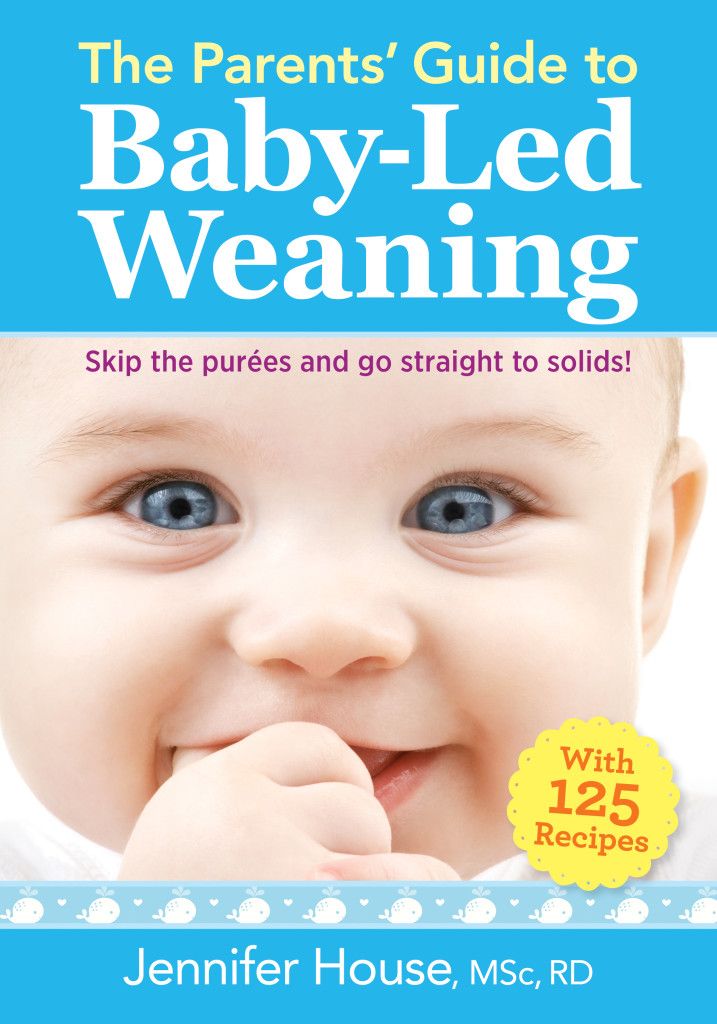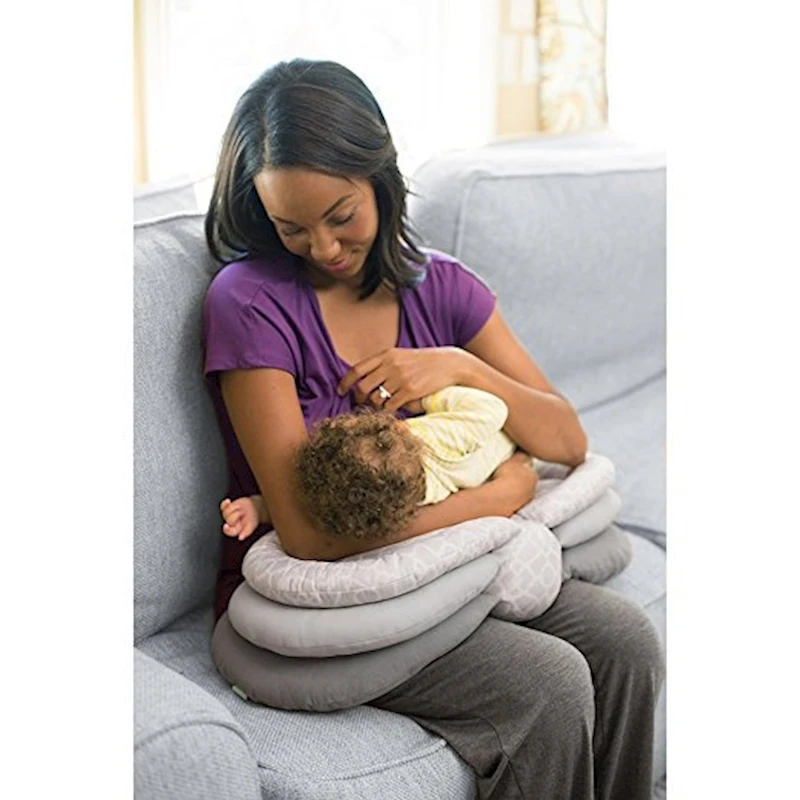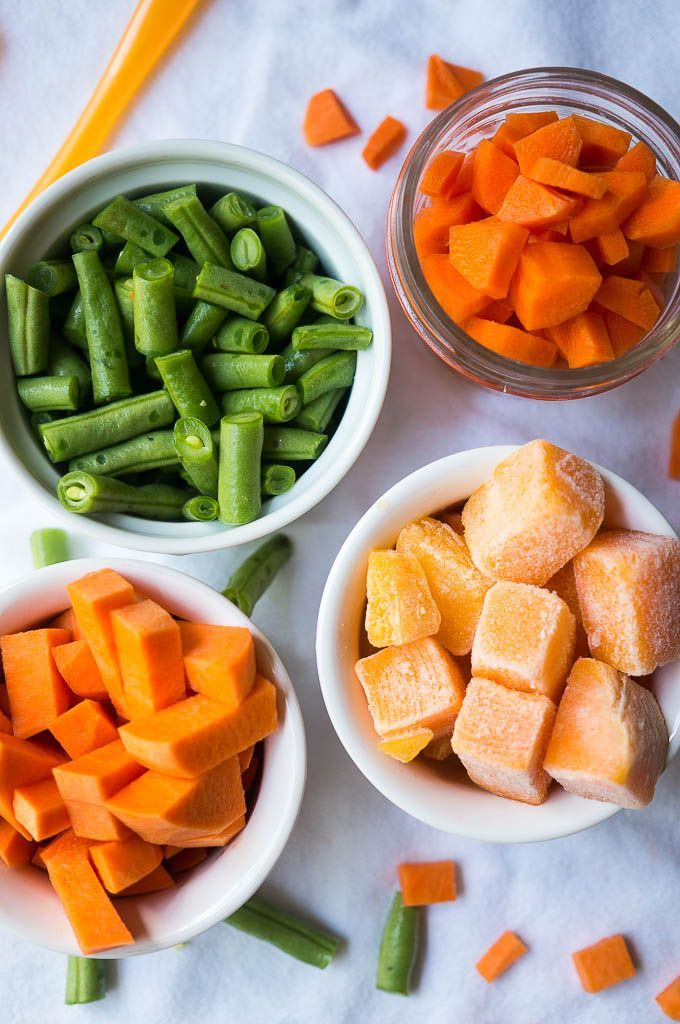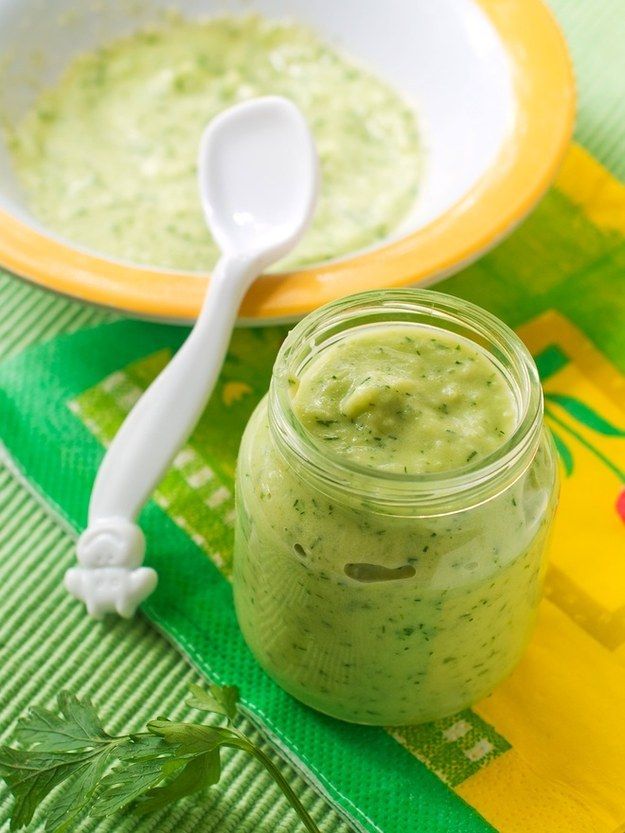How to heat up baby food without a microwave
Heating and Thawing Homemade Baby Food Purees
What is the Best Way to Heat or Thaw Homemade Baby Food Cubes?
There are many ways to heat and thaw homemade baby food. On this page we will tell you all about heating and thawing your homemade baby food cubes.
Thawing and Heating of Homemade Baby Food
When thawing or heating baby food cubes, take out as many cubes that you will feed your baby for 1 or 2 days. Remember to thaw only the amount of food that you will use in a period of 1-3 days as you should not refreeze any leftover food.
Transfer the cubes to a storage container and let the cubes thaw in the refrigerator or you may wish to transfer the cubes to a glass bowl and then thaw them in the microwave. We’ll discuss the various methods of heating and thawing homemade baby food below. Whatever method you choose, please do be sure to always test the temperature of the foods you will be feeding your baby!
Heating Homemade Baby Food
Microwave Heating
Many parents love the ease and convenience of the microwave for both heating and thawing homemade baby food. Whether or not you use the microwave to heat or thaw your homemade baby food is a decision only you can make.
To heat the baby food in the microwave, always transfer the amount of food you will be heating to a glass microwave safe container. You should not use plastic to heat foods in the mircowave. Heat the food in 15 second increments and stir after each heating. When the food has reached the temperature you desire, be sure to give one final stir so that no hot pockets are left to burn baby’s mouth.
Stove Top Heating of Homemade Baby Food
When heating baby food on the stove top, choose a smaller saucepan and place the food into the sauce pan. Gently heat the food using a low setting. Using the lower heat setting will ensure that you do not burn the food.
Do NOT store leftover food from a container that your baby has been eating from. Saliva will contaminate the food and storing leftovers may cause food poisoning.
Microwave Thawing of Homemade Baby Food
Always warm baby food cubes in a glass bowl and not in plastic containers as researchindicates glass is safer.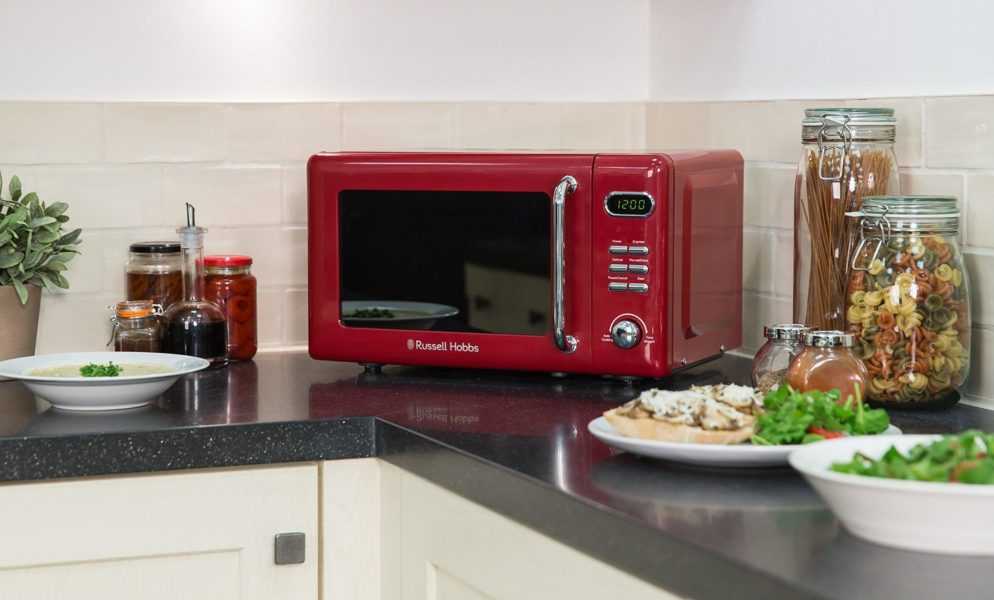 If you are using a microwave to thaw or reheat baby food cubes, be sure to stir food to ensure no hot-pockets are left to burn baby.
If you are using a microwave to thaw or reheat baby food cubes, be sure to stir food to ensure no hot-pockets are left to burn baby.
Many parents do not like to use the microwave for a variety of reasons. It is up to you to decide if heating or thawing your baby food cubes in the microwave is right for you and your baby. If you do not wish to use a microwave to thaw your baby food cubes, you may thaw your baby food cubes in the refrigerator over night (ensure that the cubes remain a closed container and not in an uncovered bowl) as mentioned.
Refrigerator Thawing of Homemade Baby Food Cubes
Thawing baby food cubes in the refrigerator will take longer than using a microwave or the floating/submersion method. You may thaw your baby food cubes in the refrigerator over night (ensure that the cubes remain a closed container and not in an uncovered bowl). This method may take up to 12 hours so do be sure to plan accordingly!
Submersion or Warm Water Thawing of Baby Food Cubes
Thawing baby food cubes using this “submersion method” should take between 10-20 minutes.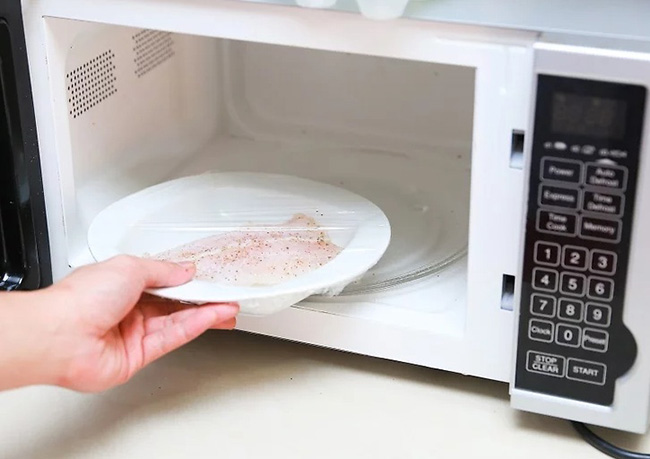 You may place the cubes in a small bowl and then place the bowl in a larger bowl filled with hot water. You can also do this with a pan of warm water on the stove; add the smaller bowl to a pot of water that you have warmed.
You may place the cubes in a small bowl and then place the bowl in a larger bowl filled with hot water. You can also do this with a pan of warm water on the stove; add the smaller bowl to a pot of water that you have warmed.
Thawing food on your kitchen counter is never recommended as bacteria or other contaminants may get into the food.
You should not feed your baby from the container and then re-store the container that baby has been fed from. Saliva may contaminate the food and bacteria may evolve. Always take the portions you will serve from the container and transfer to a feeding bowl.
Please keep in mind that reheating and serving baby food cubes is warm is NOT necessary. Baby food cubes may be served at room temperature once they have been thawed and then heated.. Many babies enjoy room temperature foods.
How Long is it Safe to Keep Thawed Baby Food in the Refrigerator
Thawed homemade baby food is just like other food that you have cooked, frozen and then thawed.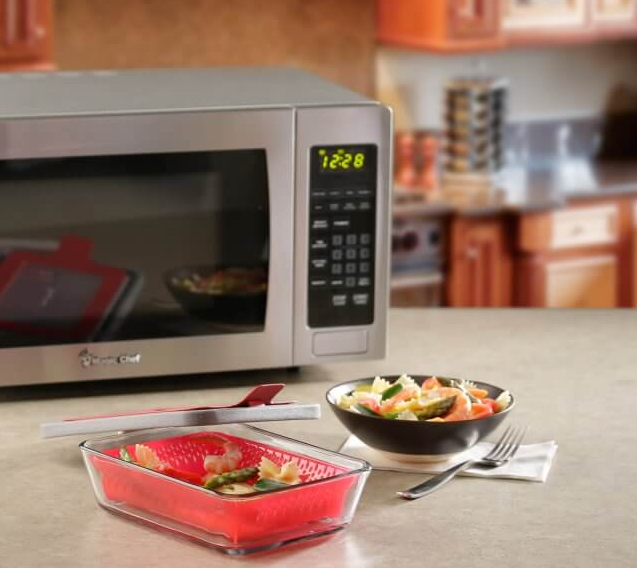 The homemade baby food that you have thawed may safely be kept in the refrigerator for 72 hours maximum. Ensure that the thawed baby food is kept in a sealed container to avoid contamination.
The homemade baby food that you have thawed may safely be kept in the refrigerator for 72 hours maximum. Ensure that the thawed baby food is kept in a sealed container to avoid contamination.
Remember, always consult with your pediatrician regarding introducing solid foods to your baby and specifically discuss any foods that may pose allergy risks for your baby.
This site complies with the HONcode standard for trustworthy health information:
verify here.
SHARE ON FACEBOOK SHARE ON PINTEREST
9 Ways to Reheat Food Without a Microwave
Can you reheat food without a microwave? Yes! It’s healthier, safety, easy to do. Use this how-to guide to find out 9 easy ways to reheat food with step-by-step directions on how to do it using appliances and kitchen tools you already have.
One of the biggest questions I get when I tell people that our family has ditched our microwave is how to reheat food. After nearly five years without one in our home, these are my go-to ways to reheat food without a microwave.
Why Get Rid of Your Microwave
Although it can be convenient, I was surprised at how little I missed my microwave once I got rid of it. There are so many reasons to get rid of your microwave and equally so many benefits if you do. Some of the main benefits include:
- It is safer: Microwaves do not reheat food evenly, which causes hot spots. Thanks to these alternative ways to reheat food without a microwave, not only will the food taste better, but it’s safer too as it reheats evenly.
- It’s healthier: When you microwave food, it actually strips your food of nutrients. This means those much-desired vitamins and antioxidants you think your food contains are actually being zapped away by radiation. Yes, microwaves give off radiation which further promotes how unhealthy they are in our homes.
- It’ll free up space: If a healthier home and better tasting, more nutritious food can’t persuade you to get rid of your microwave, how about a better-looking kitchen? It’s no secret that microwaves are not pretty.
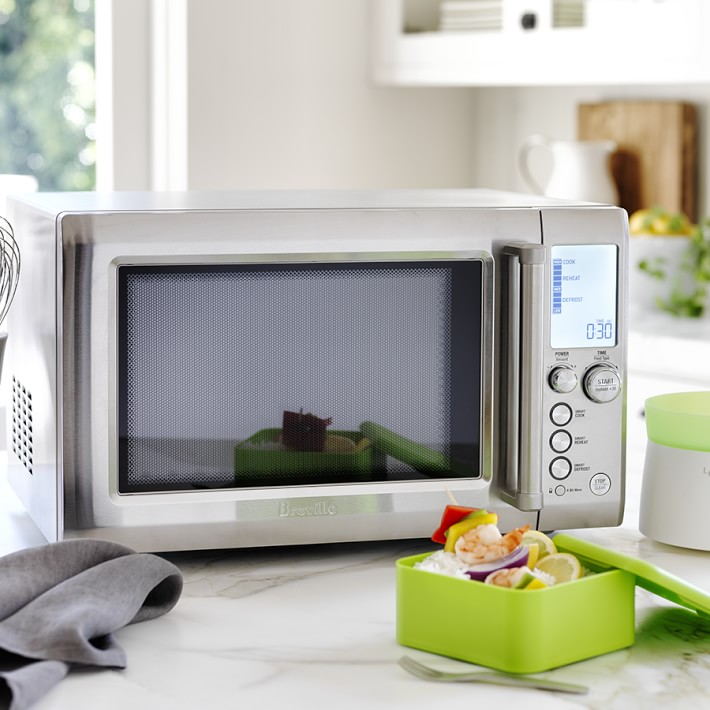 They are big, bulky appliances that take up counter space, so getting rid can do wonders for decluttering your kitchen.
They are big, bulky appliances that take up counter space, so getting rid can do wonders for decluttering your kitchen.
If it’s the idea of convenience that’s holding you back, these 9 ways to reheat food without a microwave will prove it’s actually easier than you think to cope without one.
9 Ways to Reheat Food Without a Microwave
1. Stovetop
Using the stove is likely the most obvious choice for reheating without a microwave. To reheat on the stove in a pan or pot add a little water or broth (for soups, stews, beans, pasta sauce, pasta noodles, or rice) and cover with a lid. Use low-medium heat (to heat without burning) to create steam to help heat up the food.
For roasted, fried, or baked meat, vegetable dishes, or stir fry, use a fat such as avocado oil, olive oil, or butter instead of water. Add it to the pan and cover with a lid over low-medium heat. The heat will be locked in with the lid, which will help to cook the dish both inside and out. This is one of the best ways to reheat meat without a microwave.
This is one of the best ways to reheat meat without a microwave.
Are you using a new pan? Don’t forget to season your cast iron pan before you start using it; otherwise, you could ruin your meal instead of reheating it.
2. Hot Stone Bowl
Are you looking for another option to cook on the stove? Use a hot stone bowl. I’m obsessed with my Korean stone bowl. I love to make bibimbap at home, which is a layered dish with rice, meat, and vegetables. You cook it over low-medium heat with the lid on top, and it heats the whole dish. It’s like the option above, but you can eat out of the dish, making cleaning up easier.
You can get a Korean hot stone bowl (also called a dolsot) on Amazon or your local Asian grocery store. Spray the inside with cooking spray (I use a coconut or avocado oil cooking spray) to help prevent sticking. Then I add what I want to heat – like rice, pasta, meat, etc.
Put the lid on and heat on low-medium heat. You can stir throughout the reheating process to prevent sticking as well. You could even add a little water to create steam inside the stone bowl. When it’s done, you can simply remove it from the stove, place it on a trivet, and eat from the bowl. It will be very hot, so be sure to use potholders and avoid this option with children. Or scoop out the food into a separate plate or bowl.
You could even add a little water to create steam inside the stone bowl. When it’s done, you can simply remove it from the stove, place it on a trivet, and eat from the bowl. It will be very hot, so be sure to use potholders and avoid this option with children. Or scoop out the food into a separate plate or bowl.
This can take about 5-10 minutes, depending on the dish and the volume of food.
3. Double Boiler
A double boiler is another great way to reheat without a microwave as microwaves provide fast, inconsistent, and indirect heat, whereas a double boiler provides the opposite. It provides precise temperature control through even, radiant heat.
This method is ideal for grains such as oatmeal, rice, or pasta. It also works well for reheating vegetables, stewed meat, mashed potatoes, or anything that might get dry in the reheating process where options one and two above won’t work as well.
In a large pot (with high sides), add about ½ to 1 cup of water and a metal trivet.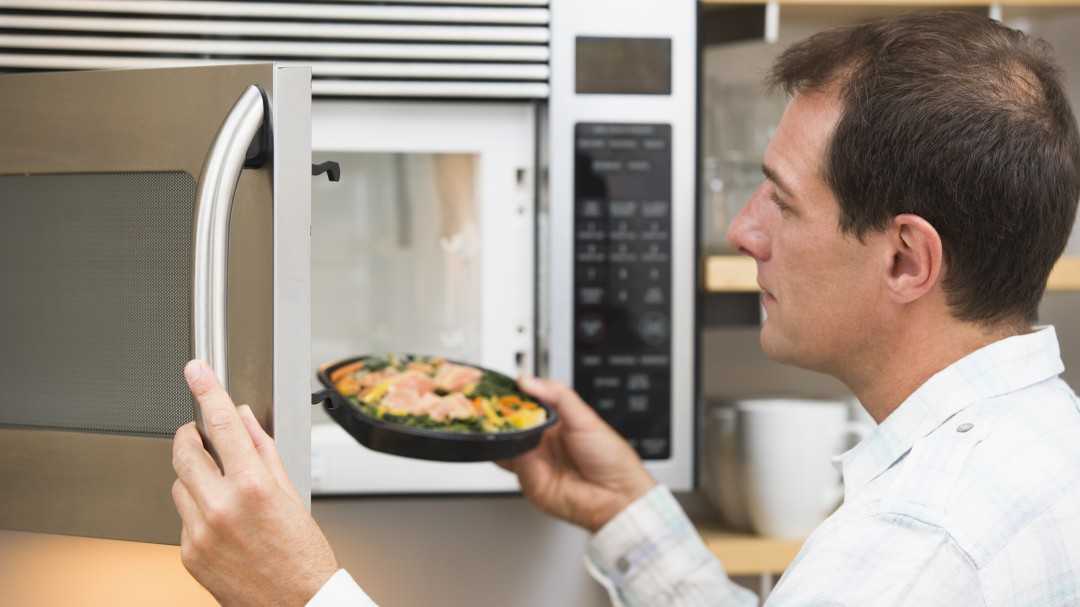 Make sure the food you want to reheat is within a heat-safe container such as a Mason jar or glass food storage container. Place the container on the trivet, then put a lid on top of the pot. Use medium heat to create steam, which will then heat the food.
Make sure the food you want to reheat is within a heat-safe container such as a Mason jar or glass food storage container. Place the container on the trivet, then put a lid on top of the pot. Use medium heat to create steam, which will then heat the food.
This method can take around 5-10 minutes, depending on the dish and the volume of food.
4. Double Boiler in an Instant Pot
Another option to steam food to reheat it is with the Instant Pot or electric pressure cooker. I really like this option as you can walk away and do other things while the food is reheating, you just need one of the most popular instant pot accessories – a trivet.
Add 1 cup of water to the inner pot, then place a metal trivet on the bottom. Place the food you want to reheat in a heat-safe container, like a glass food storage container or stainless steel bowl. Place the container on the trivet. Put the Instant Pot lid on, and lock the steam vent. Set the Instant Pot to high pressure for 5 minutes to reheat most food.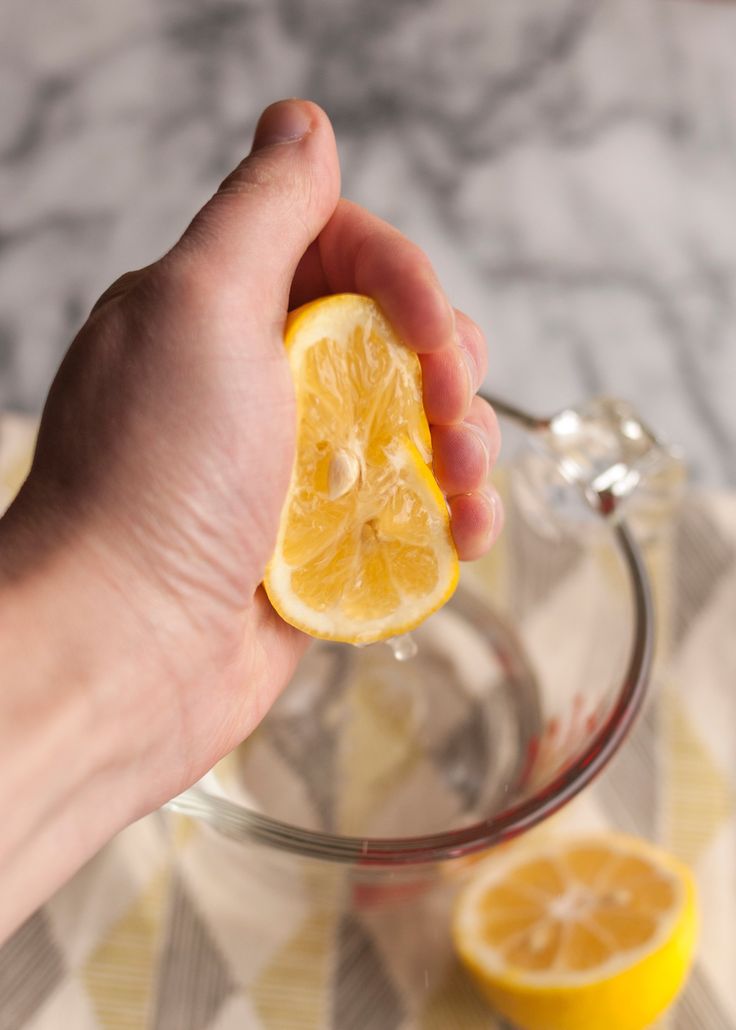 For vegetables, you might want to do 2-3 minutes.
For vegetables, you might want to do 2-3 minutes.
When it’s done, do a quick release to vent the steam. Then, remove the lid and check the food to make sure it’s reheated thoroughly. Remember it will take about 10 minutes to come to pressure before it starts cooking, so add that to your total.
New to the instant pot? Check out my instant pot tips and tricks as this useful appliance can save you SO much time in the kitchen.
5. Steam
This works best for foods like rice, quinoa, pasta, and vegetables without a sauce. It is one of the best ways to reheat food without a microwave as cooking with steam helps to conserve the fiber, texture and flavor of food. The steam helps add moisture, where a microwave can often dry out food. Steaming is also one of the best methods to preserve nutrients, such as vitamin B & C which are easily damaged by the microwaving process.
Add about 1 cup of water to a large pot. Place the food in a stainless steel basket or even a small colander with fine mesh. Be sure the basket or colander can fit into the pot, and a lid can go on top. On low-medium heat, the water will boil, and the steam will heat food. You could also add a metal trivet to the bottom of the pot, and place a stainless steel basket or a bamboo steamer basket (used in Asian dim sum).
Be sure the basket or colander can fit into the pot, and a lid can go on top. On low-medium heat, the water will boil, and the steam will heat food. You could also add a metal trivet to the bottom of the pot, and place a stainless steel basket or a bamboo steamer basket (used in Asian dim sum).
It takes about 3-5 minutes with this method or longer, depending on the volume of food. Vegetables will heat faster, so check on them so it doesn’t overcook.
6. Bake in the Toaster Oven
One of the easiest ways to reheat food without a microwave is with a toaster oven. This is great for foods like pizza, casseroles, burgers (just separate the bun and the patties), French fries, fried foods, quiche or anything with a crust, grilled meat, etc. It cooks faster than an oven which ideal if you have hungry little ones or you’re in a rush.
Place the food on a tray that fits the toaster oven. Set the temperature lower, around 300-350 degrees, on bake for about 3-5 minutes. Casseroles will take longer.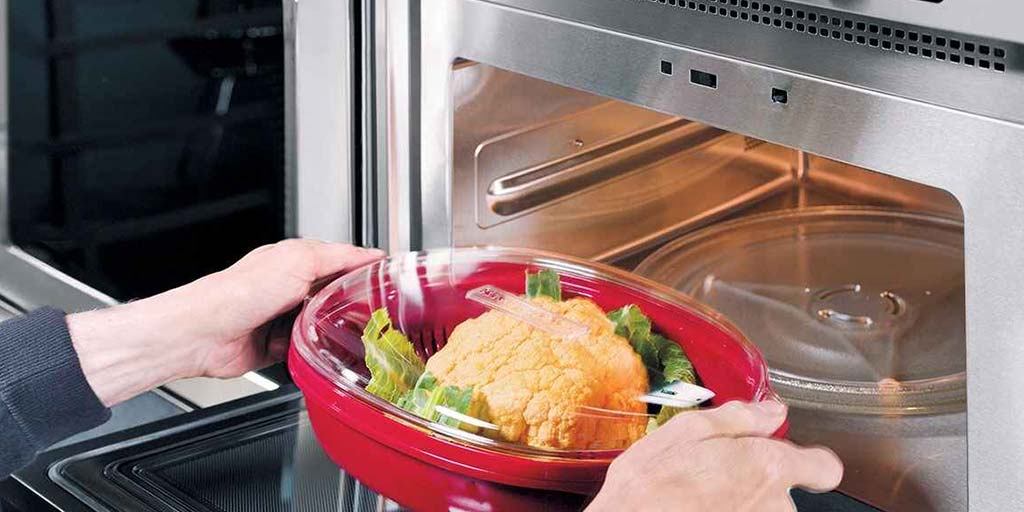 Test if the food is ready at that time or adjust as needed. For added crispy deliciousness set to broil for an additional minute or two.
Test if the food is ready at that time or adjust as needed. For added crispy deliciousness set to broil for an additional minute or two.
7. Broil in the Oven
Like the toaster oven, this works best for foods like pizza, French fries, grilled meat, and casseroles. Foods like pasta or rice will dry out in the oven without some liquid, so use other methods for those.
Set the oven for a high heat like 400-425 degrees or broil. When the oven is ready, put the food on a baking sheet and place it on the top tray of the oven. Heat for 3-5 minutes, and then check to see if it’s done. You may need to turn over the food to crisp on both sides.
For casseroles, cover the dish and place it in the oven on a lower setting, like 375-400 degrees. Covering the dish will help the heat to cook the dish inside and out. It may take longer, closer to 15-20 minutes, to reheat, depending on the size of the casserole dish and the volume of the food.
8. Air Fryer
The air fryer is a great way to reheat food like pizza, fried foods, steak, BBQ ribs, chicken nuggets, chicken wings, baked potatoes, quiche with a crust, and foods similar to a toaster oven or the oven on broil.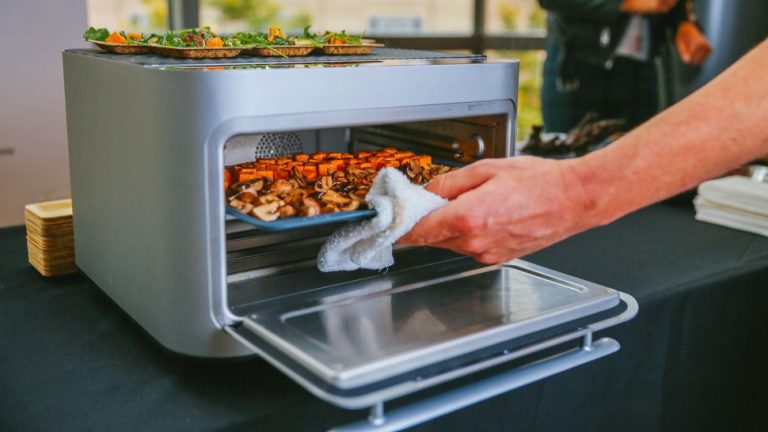 The air fryer helps the food stay crispy on the outside while cooked thoroughly on the inside.
The air fryer helps the food stay crispy on the outside while cooked thoroughly on the inside.
First, pre-heat your air fryer at 400 degrees for about 5 minutes. Spray the air fryer basket with a cooking spray (I like avocado or coconut oil). Place food in the air fryer basket, and then put the basket in the air fryer. Change the temperature to 350 degrees, and reheat food for 3-4 minutes. Test food to see if it’s done or add another 1-2 minutes as needed.
If needed, place parchment paper on the bottom of the basket before putting the food on top for things like pizza, BBQ ribs, or anything that can get messy.
9. Portable Food Warmer
Need to reheat food at work, school, or on the go? Consider a portable food warmer or crockpot. Portable food warmers are an ideal option for reheating without a microwave as they can reheat fresh, or frozen meals evenly and without burning or bad odors.
There are various styles depending on how you wish to reheat on the go.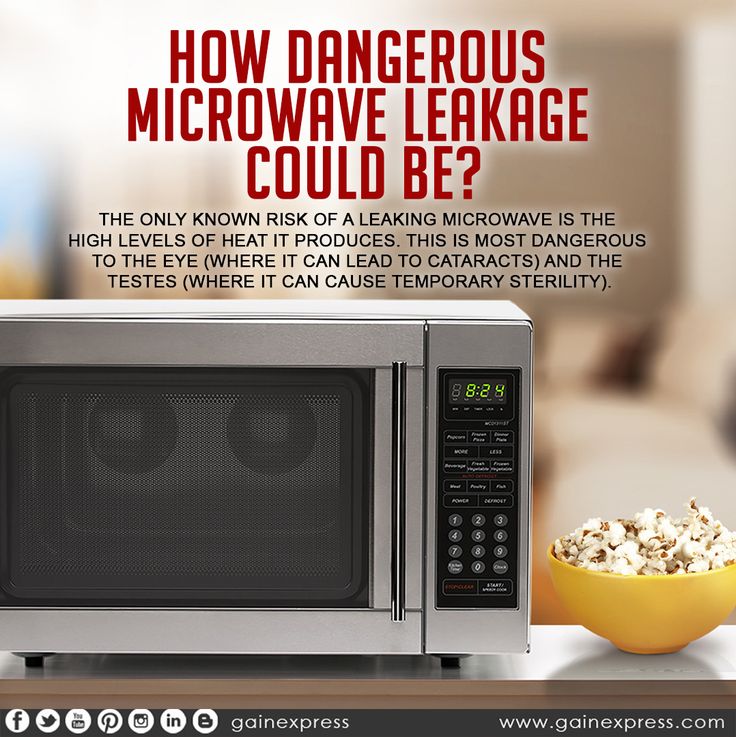 Many of them require an outlet or car charger to reheat food. Inside the portable warmer is a heating element that can reheat foods in a heat-safe container. Some styles even come with the container for extra convenience.
Many of them require an outlet or car charger to reheat food. Inside the portable warmer is a heating element that can reheat foods in a heat-safe container. Some styles even come with the container for extra convenience.
A few of my favorite portable food warmers include:
- Crock Pot – Dishwasher safe removable food container with inner lid holds up to 20 ounces of your favorite foods. Learn more & purchase here.
- Aotto Portable Food Oven – This personal portable oven is perfect for leftovers, prepared meals, and frozen foods. It is a heated lunch box design with a carrying handle, perfect for the office, travel, school dorms, hotels and more. Learn more and purchase here.
- Travelisimo Electric Lunch Box – This electric lunch box includes two different plugs for dual use. Use 110v for heated lunch box meals at the office and the 12v/24v adapter for a portable microwave function, ideal for reheating on the go on car and truck rides.
 Learn more and purchase here.
Learn more and purchase here.
Hopefully now you realize with so many ways to reheat food without a microwave there is no reason for this bulky appliance to be taking up valuable counter space any longer. After my experience of getting rid, I haven’t looked back as for me the pros definitely outweigh the cons and I’m confident they will for you too.
More Posts You Might Like
- 10 Ways to Save Time in The Kitchen
- How to Use the Button on the Instant Pot
- How to Speed Clean Your Kitchen in 30 Minutes
FREE real food guide
Eat healthier in just 7 days with my real food guide and email course. You'll learn how easy it is to go gluten-free and still enjoy the foods that you love.
Powered by ConvertKitDIY Degreasing Spray
Instant Pot Butternut Squash Soup
Is it possible to heat the puree in the microwave.
 How to quickly heat up a bottle of formula in the microwave
How to quickly heat up a bottle of formula in the microwave Proper nutrition is an important factor for the normal and full development of babies. Modern technologies have made people's lives much easier, and a young mother no longer spends a lot of time heating food or defrosting food, as a microwave oven does this in minutes. At the same time, everything related to the health of the child worries her in the first place, therefore, many women during this period are worried about the question of whether it is possible to heat the mixture for feeding the baby in the microwave.
The answer to the question of whether it is possible to heat infant formula in the microwave is directly contained in the manufacturer's instructions that are attached to baby products. Both the bottle itself and the packaging of baby food contain a direct indication that the mixture in the bottle cannot be heated in the microwave.
Manufacturers of baby formula for babies in the recommendations for the preparation of infant formula say that it is not recommended to prepare a large amount of formula.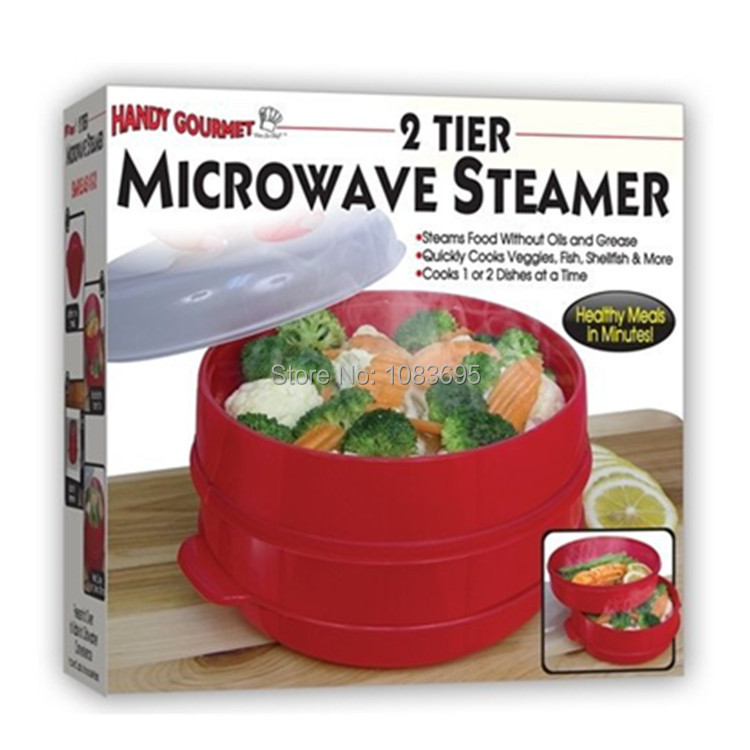 If there is leftover food for babies, do not use it at the next feeding. In connection with this warning, it is necessary to prepare food in such an amount that is sufficient for a single feeding.
If there is leftover food for babies, do not use it at the next feeding. In connection with this warning, it is necessary to prepare food in such an amount that is sufficient for a single feeding.
The main concerns regarding the harmfulness of heating food in the microwave are related to the fact that when heated, vitamins and nutrients are destroyed.
There are no definitive studies on the dangers of microwave ovens. The principle of operation of the furnace is based on the usual transfer of heat from the source to the products. In this regard, it is possible to heat water in the usual way with its help. To do this, follow the safety rules and use dishes that are suitable for heating in the microwave.
Microwave baby food
Children's food is often not reheated in the microwave, not only due to a direct ban on the manufacturer. In older children, with the introduction of complementary foods, the diet becomes more varied, and the menu contains cereals, fruit and vegetable purees.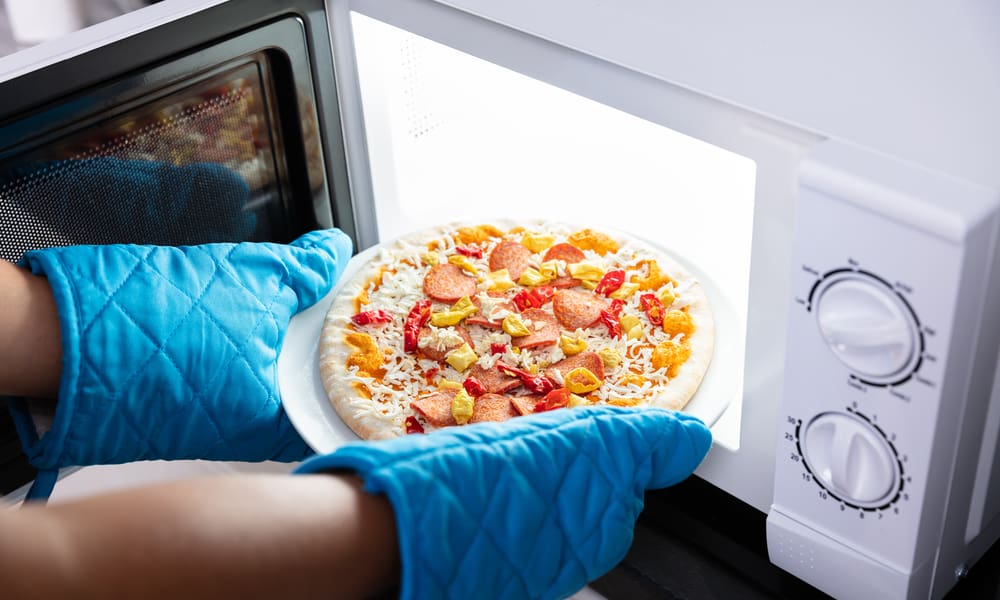 It is possible to heat up such products, but it is not recommended for a number of reasons.
It is possible to heat up such products, but it is not recommended for a number of reasons.
The main ones are:
- the microwave does not always heat the food evenly, which can result in damage to the dish;
- Boiling state cannot be achieved with technology;
- constantly checking how hot the food is;
- bottle may explode;
- food may burn the throat due to uneven heating.
Feeding a small child requires special control over the cooking technique, which involves boiling without salt, followed by bringing the product to the desired consistency.
The desired effect is often not achieved in a microwave oven. At the same time, with the correct implementation of the warm-up rules, it is possible to use the technique for warming up food, with the exception of infant formula or packages, the instructions for which directly state that the use of the technique is prohibited.
How to properly heat food
Use only special dishes for heating. Containers made of metal or with decorative shiny patterns are not used. It is not recommended to heat food in small glass jars, as the material heats up quickly and the food remains cold.
Containers made of metal or with decorative shiny patterns are not used. It is not recommended to heat food in small glass jars, as the material heats up quickly and the food remains cold.
Microwave heating involves the use of medium modes and short process times. In most cases, the duration of the procedure does not exceed 10-15 seconds. After that, food is not immediately given to the child, it is carefully checked and, if necessary, mixed to obtain the same comfortable temperature.
What paediatricians and gastroenterologists say
Most experts will recommend using a conventional gas or electric stove to prepare baby food. You can use the microwave to heat food, except for infant formula.
The main misconceptions associated with household appliances stem from a lack of understanding of how they work.
The main ones are related to the following points:
- microwave changes the molecular structure, and due to this, the product is heated - for this effect to occur, ionizing radiation must be present, which is not present in the oven;
- technique destroys vitamins - the decrease in the usefulness of products occurs due to heating and does not depend on the method;
- carcinogens are released during the process - such elements appear only during frying, the effect of cooking in the oven is similar to a conventional double boiler.
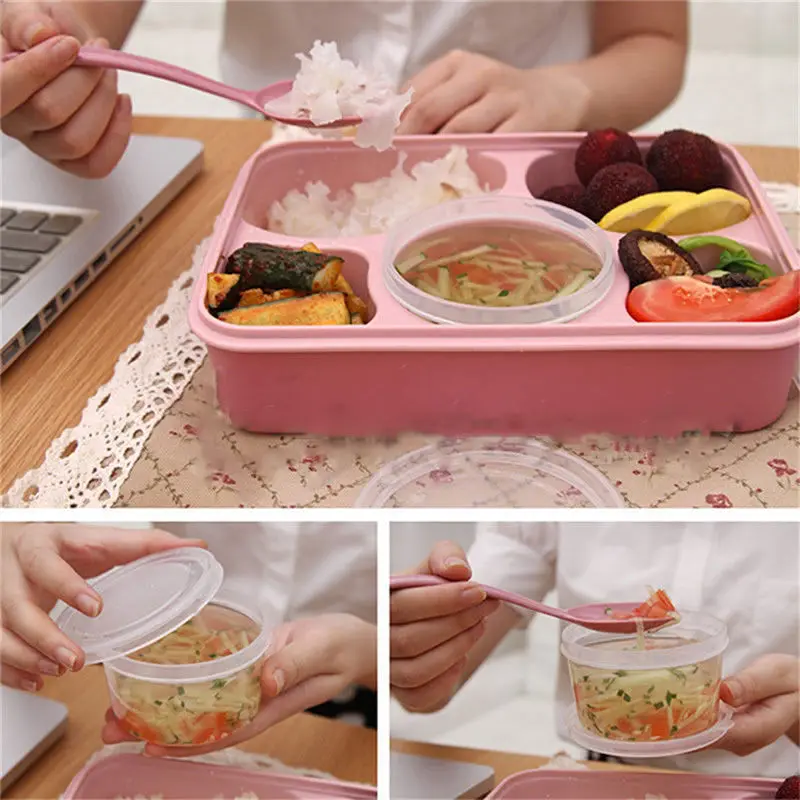
In the microwave, food is heated by the action of waves to a depth of only 3 cm, a further effect is provided by heating from already heated layers. This feature explains why the middle of the liquid bottle often remains cold when milk is heated. To eliminate this problem, a longer warm-up at minimum power is recommended.
Which bottles are better
Only certain types of dishes are suitable for use in the microwave. Experts advise against heating in containers that contain bisphenol, since when heated, the substance is released into food and, if ingested, has a harmful effect. Such bottles and containers are marked with the code "7" or the symbol "PC". In case of doubts about the quality of dishes and the possibility of heating in the oven, it is better to use ordinary or glass dishes for these purposes.
Can baby food be cooked in the microwave? Do microwaved foods retain vitamins? How to warm up expressed milk for a baby? Is it possible to heat juices, mashed potatoes and cereals for a baby in the microwave? Such questions concern many young mothers who care about the health and well-being of their children.
Microwave and breast milk
The answer to the question about heating breast milk in a microwave oven is unambiguous. And that answer is "NO". Moreover, any manipulations using a microwave with expressed milk are strictly prohibited. Microwaves affect the living components of mother's milk, for example, immunoglobulins. As a result, they either die or their structure changes. Thus, warmed milk comes out of the oven, but no longer breast milk! And gradual heating in warm water does not cause such changes, as a result, the baby gets his favorite food unharmed. It is more correct to heat the mixture and milk in a water bath.
Good or bad?
Microwave oven heats food with electromagnetic energy. A lot of research has been done on the identification of harmful substances in dishes that are prepared with its help. Some of the scientists are sure that food from the microwave is no less healthy than when cooked and heated in the usual ways. And information about the remains of microwave radiation in food is pure myth./nginx/o/2022/02/01/14339435t1h58e6.jpg) Since the processing time of products in the microwave is several times less, in contrast to traditional cooking methods, therefore, all useful substances are destroyed much less. Another undoubted advantage of microwave dishes is the absence of the need to add additional fats, which release carcinogens during heat treatment. The very same method of cooking is akin to steam. Be that as it may, no one is ready to talk about the benefits or harms of microwaves today.
Since the processing time of products in the microwave is several times less, in contrast to traditional cooking methods, therefore, all useful substances are destroyed much less. Another undoubted advantage of microwave dishes is the absence of the need to add additional fats, which release carcinogens during heat treatment. The very same method of cooking is akin to steam. Be that as it may, no one is ready to talk about the benefits or harms of microwaves today.
Pediatricians do not recommend microwaving baby food in any way, just because oven manufacturers do not indicate in the instructions how to use their products in this way. And the debate about the safety of microwaves has not yet subsided in scientific circles.
Gastroenterologists are definitely against heating breast milk in this way, since electromagnetic waves can change its structure (L-proline amino acids turn into nephro- and neurotoxic d-isomers, and they are poisonous for babies, interfere with kidney function, dangerous for the nervous system.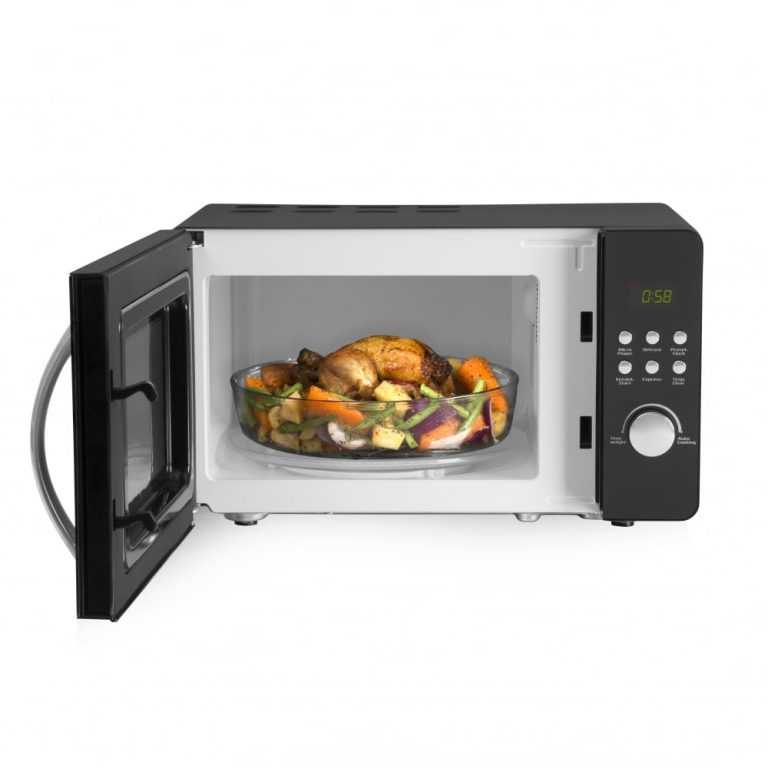 Also, artificial mixtures should not be heated, since they have a structure similar to mother's milk, which is destroyed by electromagnetic radiation.Doctors recommend processing food intended for a child in the traditional way.In this case, a water bath is best.
Also, artificial mixtures should not be heated, since they have a structure similar to mother's milk, which is destroyed by electromagnetic radiation.Doctors recommend processing food intended for a child in the traditional way.In this case, a water bath is best.
Microwaves act on the water that is in the food, as a result, the water molecules begin to rotate at a tremendous speed. This is why food in the microwave cooks and heats up so quickly. However, this breaks down and changes the molecular structure of the food. Of course, each mother will have to decide for herself how to process food for her child, but the main thing is to correctly assess the benefits and risks.
It is convenient to heat baby food in the microwave - it saves a lot of time. Just a couple of minutes, and the job is done: milk, porridge or mashed potatoes are warm. But mothers are worried: does food become harmful if it is heated in a microwave oven? There are so many conflicting rumors about the influence of microwaves - what is true and what is fiction?
Microwave ovens have settled in almost every kitchen, saving time for their owners, facilitating kitchen chores.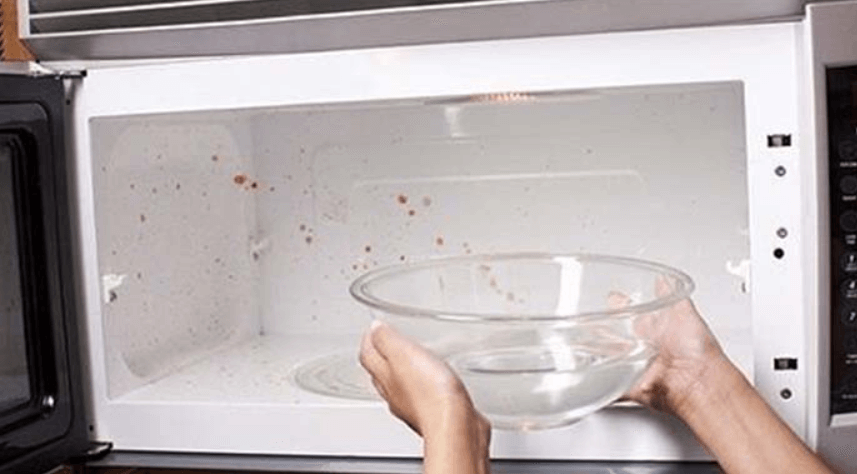 The operation of a microwave oven is based on the action of electromagnetic waves. Microwaves are harmful to humans, so there is debate about the usefulness of food prepared with their help. Many scientists claim that food from a microwave oven is completely safe, stories about the remnants of radiation in it are a myth. The power is too low to somehow affect the body.
The operation of a microwave oven is based on the action of electromagnetic waves. Microwaves are harmful to humans, so there is debate about the usefulness of food prepared with their help. Many scientists claim that food from a microwave oven is completely safe, stories about the remnants of radiation in it are a myth. The power is too low to somehow affect the body.
Users ask if vitamins are preserved in the microwave. Yes, and there are more of them than in food prepared in the usual way. The reason is the short duration of the process. Dishes are prepared many times faster, less useful substances are destroyed. Another positive point is that you do not need to add oils and fats, so the food turns out to be dietary, almost like in a double boiler.
About breast milk
Breastfeeding mothers ask if breast milk can be heated in the microwave. Definitely - no! Expressed milk must not be heated with microwaves. They act on immunoglobulins and other living components, kill them or at least change their structure. You will get from the cell not priceless food, but a little useful liquid, comparable to cow's milk.
You will get from the cell not priceless food, but a little useful liquid, comparable to cow's milk.
Heating of mother's milk in the microwave chamber is strictly prohibited - it is heated only in warm water, in a water bath.
Is it possible to heat artificial mixtures
If you need to warm artificial food, it is better to use the old proven method - hot water. But you can still take advantage of the microwave oven: heat water in it, in which you put milk or baby puree.
If you need to warm up a bottle of formula in a café, ask for a large cup of hot water. Put the bottle in it and heat the mixture.
What pediatricians and gastroenterologists say
Pediatricians advise parents not to heat formula or heat milk in the microwave. In general, you should not cook food for kids in it - in any form, doctors insist. Disputes about the dangers of microwaves are ongoing, which means that it is not worth risking the health of a child. Manufacturers do not mention in the instructions for microwave ovens the possibility of using them for baby food.
Manufacturers do not mention in the instructions for microwave ovens the possibility of using them for baby food.
Gastroenterologists are categorical in terms of breast milk: heating it with microwaves means radically changing the structure. Amino acids of L-proline are transformed into toxic d-isomers. These connections:
- interfere with the functioning of the kidneys;
- harm the nervous system.
Which bottles are better
Mom's formula is poured into bottles made of glass or plastic. It is recommended to use glass - they are safer. As it turned out, the plastic container contains bisphenol-A. When the plastic heats up, the phenol molecules are released and enter the contents. Animal studies have shown that after regularly eating food from heated plastic, health deteriorated. The impact on people has not been studied, but there is a risk - it is better to refuse plastic containers.
Polycarbonate dishes should not be boiled, microwaved or even washed in a dishwasher.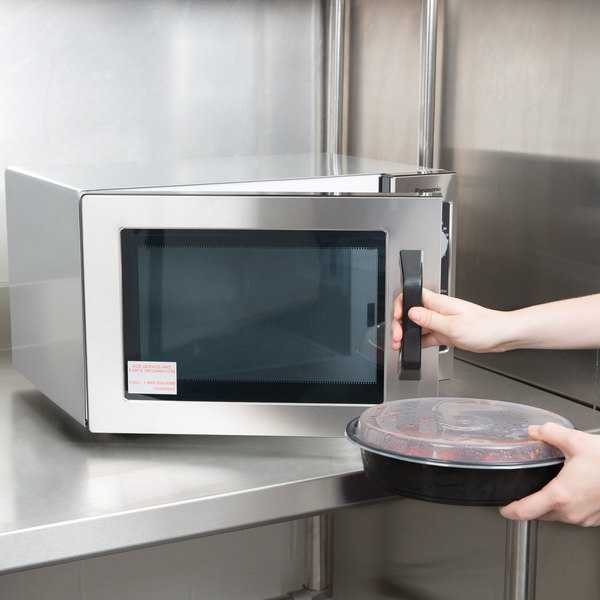
Take care of your baby, try to use the microwave oven only in extreme cases.
In today's society, every fourth family uses household appliances, because they help us save a lot of time. For example, a microwave oven is an indispensable tool for young mothers. After all, it is so convenient to heat baby puree, formula or breast milk in the microwave in just a few seconds and feed the baby.
But what happens to baby food when exposed to microwaves? How does microwave food affect a child's body? These and many other questions regarding the harm and benefits of a microwave oven are of concern to many mothers. Some argue that microwaves do no harm to food, others believe that they destroy vitamins and deprive food of useful properties.
We decided to write this article after we received a letter from our regular reader who writes...
“Hello, website editors! My name is Irina. Four months ago, I became a mother. I feed my baby with breast milk, but from 6 months, I plan to introduce complementary foods in the form of mashed potatoes into the child's diet.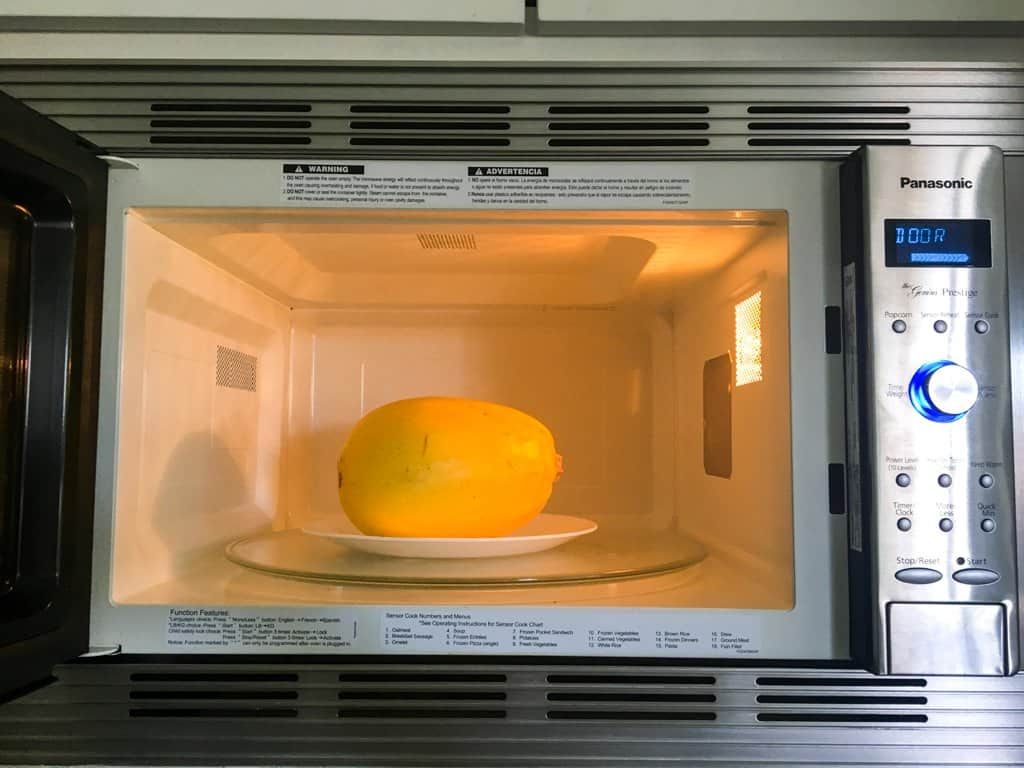 And I had a question: is it possible to heat baby puree in the microwave or, like our grandmothers, heat everything in a water bath? It is important for me to understand whether baby food loses its beneficial properties when heated in the microwave, and whether waves affect food in a negative way?”
And I had a question: is it possible to heat baby puree in the microwave or, like our grandmothers, heat everything in a water bath? It is important for me to understand whether baby food loses its beneficial properties when heated in the microwave, and whether waves affect food in a negative way?”
So is it still possible to heat baby puree in the microwave? We offer together to understand this difficult issue and, perhaps, dispel some myths. In any case, you and only you, dear mothers, decide whether to listen to our recommendations or not.
Myth #1 Microwave ovens emit radioactive waves.
This is an erroneous statement. Because the waves belong to the group of non-ionizing, and there can be no radioactive impact. They in no way affect either food or the human body as a whole.
Myth #2 Exposure to microwaves changes the molecular structure of foods and they become carcinogenic.
Fortunately, this is not true either. To make a product carcinogenic is subject only to X-ray or ionizing waves. Carcinogenic substances are also released when foods are fried in hot oil. What doesn't happen when you reheat baby puree.
Carcinogenic substances are also released when foods are fried in hot oil. What doesn't happen when you reheat baby puree.
Myth #3 Magnetic radiation from microwaves
In fact, we are exposed to magnetic radiation every day: televisions, computers, mobile phones, radios, etc. Microwaves are no exception. Yes, its waves are more powerful, but, due to the "smart" device of the furnace and screened grids, the radiation remains inside.
Neither the walls of the cabinet, nor the doors, nor the food placed inside are capable of accumulating electromagnetic radiation of microwaves. And as soon as the oven stops working, the microwaves disappear. Waves can harm health only with a direct impact on some part of the body.
Scientists' opinions about the dangers and benefits of microwaves
For 25 years, scientists have been studying the effects of waves on the human body. As a result of experiments, it was proved that food cooked or heated in the microwave does not lose its beneficial properties at all.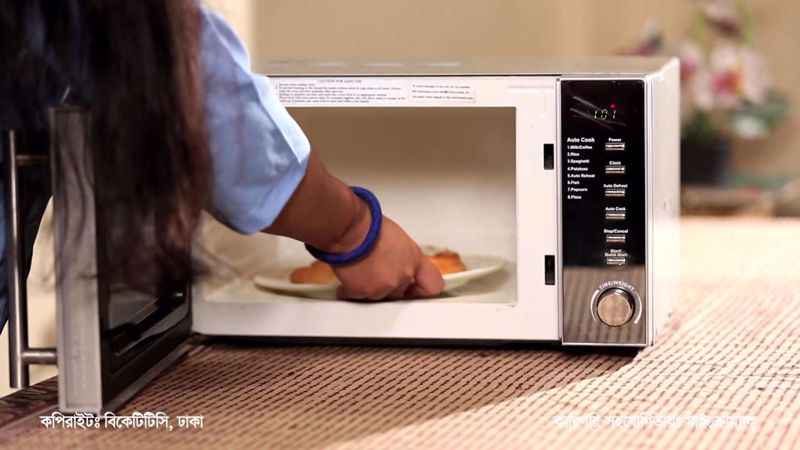 And in some cases, on the contrary, it is more useful and less high-calorie, since it does not require the addition of oil when cooking, unlike food cooked in a pan.
And in some cases, on the contrary, it is more useful and less high-calorie, since it does not require the addition of oil when cooking, unlike food cooked in a pan.
In addition, products retain 2-3 times more vitamins, as they are not subjected to prolonged heat treatment, and the cooking method is more like steam.
WHO has disproved the theory that microwaves are harmful to health. However, some baby food manufacturers advise against heating baby puree, formula, and milk in the microwave. Arguing that the microwave oven does not heat the food evenly. As a result, areas with high temperature are formed, which can burn the child. But you must admit that unevenly heated mashed potatoes can simply be mixed, and a child can get burned on food heated in any other way, if you do not pay enough attention to this. So this argument is probably weak.
Can breastmilk be heated in the microwave?
But breast milk is not so simple. Mother's milk has unique vitamins and microelements that cannot be replaced by even the best mixture. And young mothers should know that in areas with high temperatures, the destruction of useful components, such as immunoglobulins, occurs. What makes breast milk less healthy. Therefore, mother's milk, unlike baby puree, will be better heated in a water bath.
And young mothers should know that in areas with high temperatures, the destruction of useful components, such as immunoglobulins, occurs. What makes breast milk less healthy. Therefore, mother's milk, unlike baby puree, will be better heated in a water bath.
With incredible difficulty, I opened my eyes and tried to see what time it was, the luminous numbers on the electronic clock seemed blurry, and it took me time to focus my vision and see them - it's time to feed Artyomka. I slowly got up and went to the kitchen to heat up the infant formula. Then I remember everything, like in a fog, I took out the mixture, poured it into a baby bottle, added water and put it in the microwave, at that moment, without even thinking about whether it was possible to heat the baby formula in the microwave.
But I still had to look into this issue, a little later, when my mother scolded me for my indiscretion, firmly convinced that the use of a microwave oven to heat baby food is harmful and categorically unacceptable. So I wondered how it really is, is it possible to heat baby formula, breast milk, mashed potatoes and other baby food in the microwave?
So I wondered how it really is, is it possible to heat baby formula, breast milk, mashed potatoes and other baby food in the microwave?
Can breast milk be heated in the microwave?
It's time to admit to yourself that all the stories about the dangers of microwave ovens are a myth, and food heated in it does not harm our health. However, some products, for various reasons, are still not recommended for heating in the microwave.
One such product that is not recommended for microwave heating is breast milk.
The fact is that when heated in a microwave oven, part of the immunoglobulins and vitamins, the content of which is not equal to breast milk, is destroyed. And from this, of course, mother's milk becomes less useful.
Can infant formula be heated in the microwave?
But in this question you need to pay attention to what exactly you want to do.
If you need to heat water in the microwave and dilute infant formula in it, then you can safely do it.
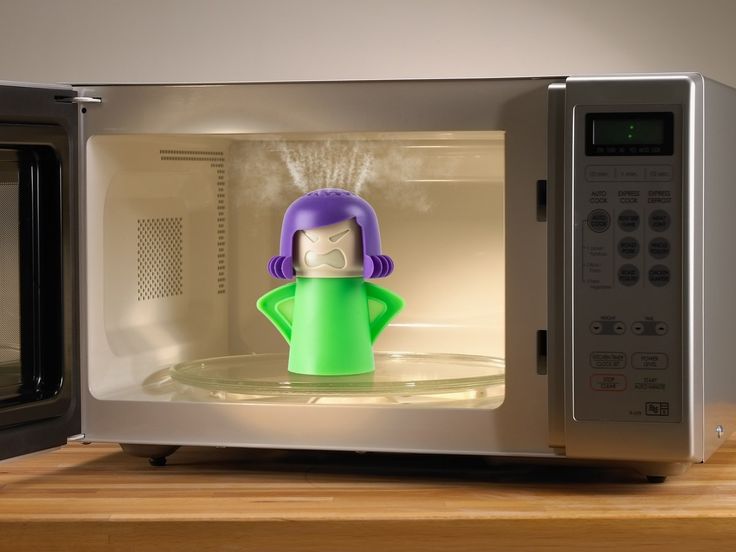
But it is not worth warming up the pre-prepared mixture.
And the point here is not at all in the microwave, it's just that almost all baby food manufacturers write on packages with the mixture that you need to use it immediately after preparation. Manufacturers do not recommend leaving the milk mixture for later, even if in the refrigerator, and then reheating it.
Can baby puree be heated in the microwave?
All the myths that a microwave oven emits radioactive waves, changes the molecular structure of foods and makes them carcinogenic, are complete nonsense. There is not a single confirmation of these myths, and on the contrary, all the studies conducted over the past quarter century indicate the opposite.
Therefore, I would like to assure all mothers who are worried about the health of their children - you can heat baby puree in the microwave.
The only thing I would like to remind you is that before you start feeding the baby puree heated in the microwave, it must be mixed and tasted, as the product may heat up unevenly, and the baby will burn.
Can milk be heated in the microwave?
You can heat cow's milk in the microwave.
If you decide to heat cow's milk in the microwave, you can be calm, it will not bring any harm to your health. But the benefits, most likely, too. And the point here is not at all in the microwave, but in the fact that before getting to the store counter, the milk is already processed and pasteurized in the factory. And of course, it is already difficult to talk about its naturalness and usefulness after that.
It's different when it comes to breast milk that you have expressed and now decide to warm it up. Of course, this is not worth doing. About why, we already wrote in this article, a little higher.
Is it possible to heat kefir in the microwave?
If we consider the question of whether it is possible to heat kefir in the microwave, in terms of preserving the benefits of the product, and we are convinced that this is the most important aspect in preparing food for a child.
Then the answer will be negative, heating kefir in the microwave is undesirable.
Since most of the beneficial microorganisms, including lactic acid and bifidobacteria, die when heated. And even such a small temperature as 38-40 degrees becomes critical for their survival. But in a microwave oven, the product heats up unevenly, and in some places the temperature reaches much higher marks.
If the preservation of the beneficial properties of kefir is not in the first place for you, then you can heat it in the microwave. At the same time, of course, it will lose some of its useful microorganisms, but still it will not become completely useless. But remember that with rapid heating, kefir can curdle. Therefore, when heating kefir in a microwave oven, you should not do it longer than 10-15 seconds. If this is not enough, you can take it out of the microwave, mix it well and put it on for another 10-15 seconds.
Can cottage cheese be heated in the microwave?
Almost all fermented milk products contain beneficial bacteria - probiotics.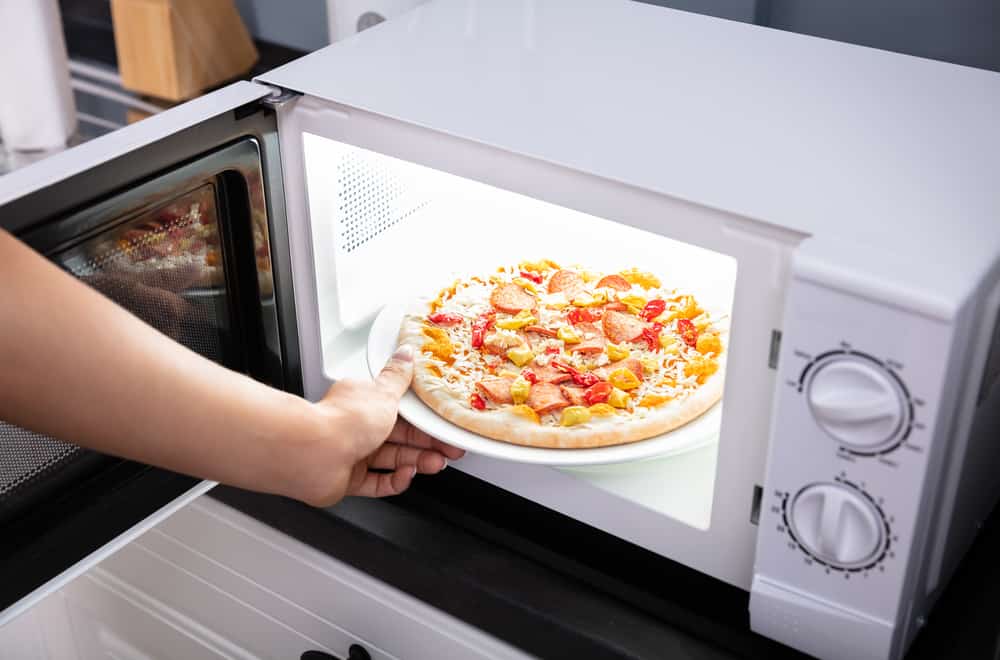 It is they that increase the activity of immune cells, produce antibodies against pathogenic bacteria and inhibit the growth of harmful microbes, thereby creating a balance in the intestinal microflora.
It is they that increase the activity of immune cells, produce antibodies against pathogenic bacteria and inhibit the growth of harmful microbes, thereby creating a balance in the intestinal microflora.
Unfortunately, when heated, probiotics die, so it is undesirable for a child to heat cottage cheese in the microwave.
Heating cottage cheese in a microwave oven significantly reduces the beneficial properties of the product. In addition, this is not particularly necessary, because few children like cottage cheese in a warm form. It will be enough just to get the cottage cheese out of the refrigerator and let it stand for 30-40 minutes at room temperature.
Can yogurt be heated in the microwave?
However, like kefir, cottage cheese, and any other fermented milk products. We already wrote about this a little higher - it's all about beneficial bacteria that die when exposed to high temperatures.
If you do decide to use the microwave to warm up the yogurt, remember to remove the foil cap from the packaging. Foil is essentially a thin layer of metal, and the use of metal objects in a microwave oven is not acceptable, and may cause damage to it.
Foil is essentially a thin layer of metal, and the use of metal objects in a microwave oven is not acceptable, and may cause damage to it.
Can I heat a baby bottle in the microwave?
Well, we sort of figured out which foods can be heated in the microwave and which can't. But any mother, sooner or later, will have a question, is it possible to heat food for a child right in a baby bottle? Unfortunately, there is no unequivocal answer to this question, here you need to proceed from the manufacturer's recommendations indicated on the package.
But I want to assure you that in our time, most manufacturers of baby bottles use only high-quality materials and plastics that are allowed to be heated in the microwave.
It is worth paying attention to this at the time of purchase, it will save you from unnecessary problems in the near future and make life much easier.
Defrosting and serving baby food. Your baby from birth to two years old
Defrosting and serving baby food. Your baby from birth to two years
Your baby from birth to two years WikiReading
Your baby from birth to two years old
Sears Martha
Content
Defrosting and serving baby food
Frozen meals should not be thawed at room temperature for long periods of time. When it's time to use frozen baby food, try these tips:
• For slow defrosting, place one serving or all-day supply in the refrigerator and leave for three to four hours.
• For quick defrosting, use an electric defrost or place a frozen cube or open jar in a heat-resistant small container and place in a small saucepan. Fill the pot with water just short of the rim of the food container. Defrost and reheat over medium heat, stirring occasionally to heat evenly.
• Before giving baby food to a baby, be sure to mix it thoroughly and taste to make sure there are no areas too hot for the baby.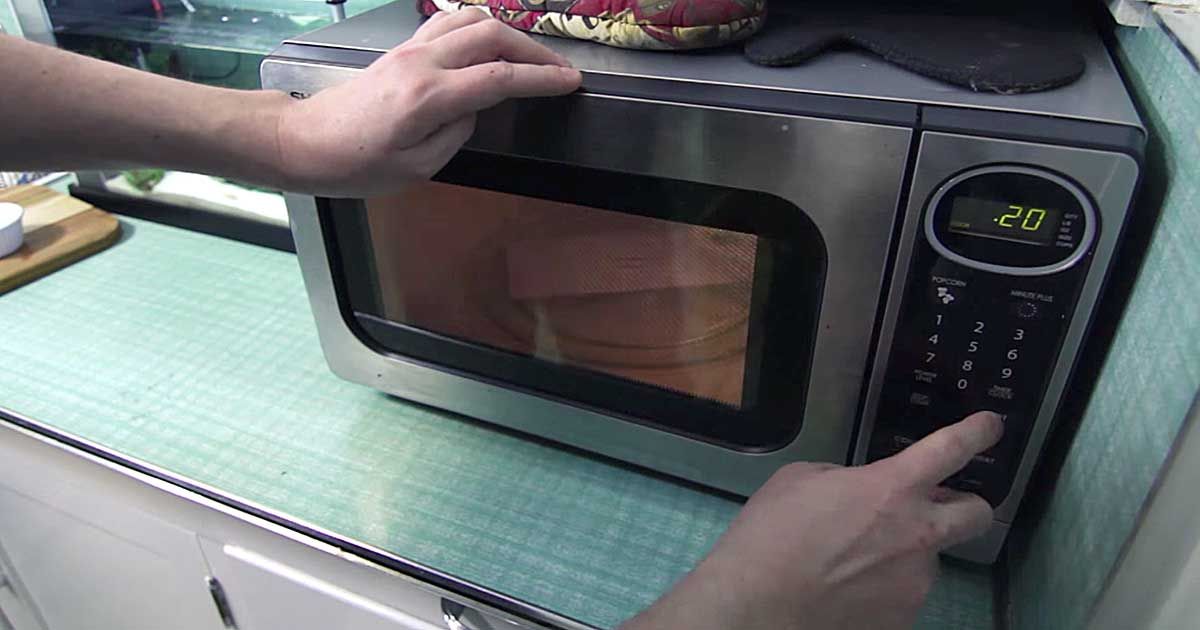 Touch the product with your upper lip each time you load another spoon. Even the smallest amount of food that is too hot can teach a child not to trust what lies in the spoon approaching him. You can better check the temperature with your finger.
Touch the product with your upper lip each time you load another spoon. Even the smallest amount of food that is too hot can teach a child not to trust what lies in the spoon approaching him. You can better check the temperature with your finger.
• Because microwave heating can create hot spots in food that can burn your child's mouth, we do not recommend this method. If you choose a microwave, be very careful to stir and always try a little yourself to see if the food is evenly heated before feeding your baby.
• To avoid wasting food, feed your baby with a spoon of the portion you think he can handle. If he wants more, use a clean spoon to place the topping on his plate. You can store the rest of the dish in the refrigerator for two days, but only if saliva does not get into it.
Some babies don't eat "baby food" at all, and all this information on how to make it can be skipped if your baby tolerates a fairly firm texture, refuses solid foods for a long time, can't stand being spoon-fed, or transitions immediately to hand feeding.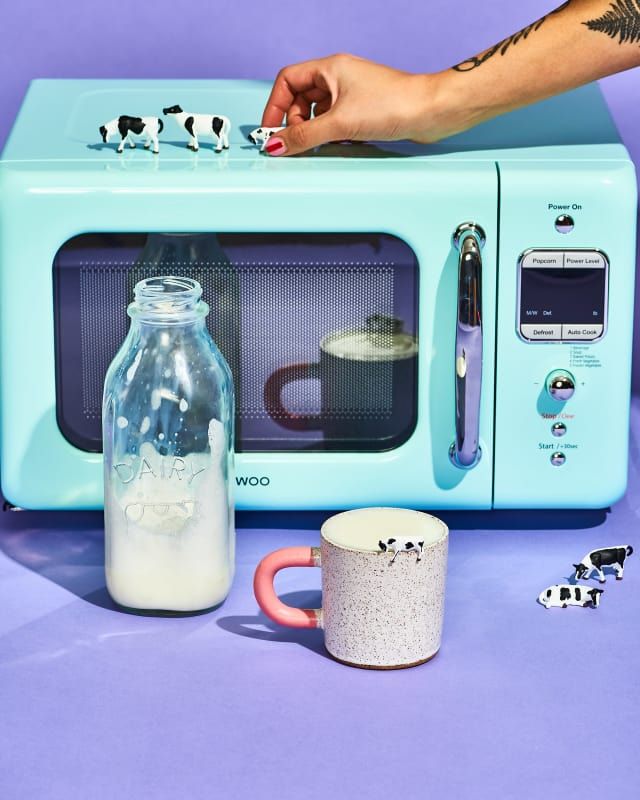 Some mothers really go into making baby food; others simply cook for the whole family and mash a portion for the child with a fork.
Some mothers really go into making baby food; others simply cook for the whole family and mash a portion for the child with a fork.
This text is an introductory fragment.
Table and chair
Table and chair Do two exercises with your child and ask him to guess where the chair turned out and where the table turned out. Riddle No. 1: Place your left palm vertically up. From below, put the fist of your right hand with your thumb towards you. (Chair) Riddle #2: Clench your left hand into a fist. Top
Tip 12 More variety, please
Tip 12 More variety on the table, please Almost like adults These adults are strange people - we are with you. We trumpet on all corners that food should be as diverse as possible: only in this way, they say, the body will receive everything it needs.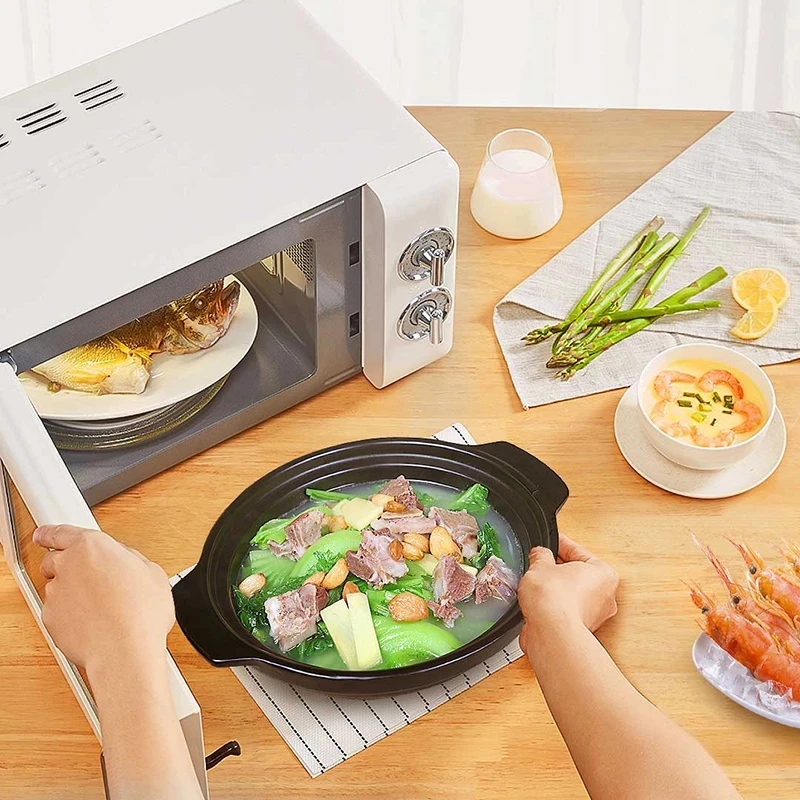 For breakfast we eat one thing, for lunch - another, for dinner
For breakfast we eat one thing, for lunch - another, for dinner
Power mode
Diet • Food should be fresh and look appetizing. • It is very important that meals take place at the same time. Then you will be able to ensure a regular supply of nutrients to build the growing tissues of the fetus, uterus, mammary glands, amniotic
Manufactured baby foods
Industrial baby food products What applies to baby food products of industrial production for children of the first year of life • Canned fruit, vegetable and fruit and vegetable juices and purees. • Dry instant cereals and
Level 3: submission
Level 3: Submission The methods of presenting impromptu speeches are not much different from presenting prepared speeches. At the third level, you will work on gestures, pauses, eye contact, intonation, and other delivery methods.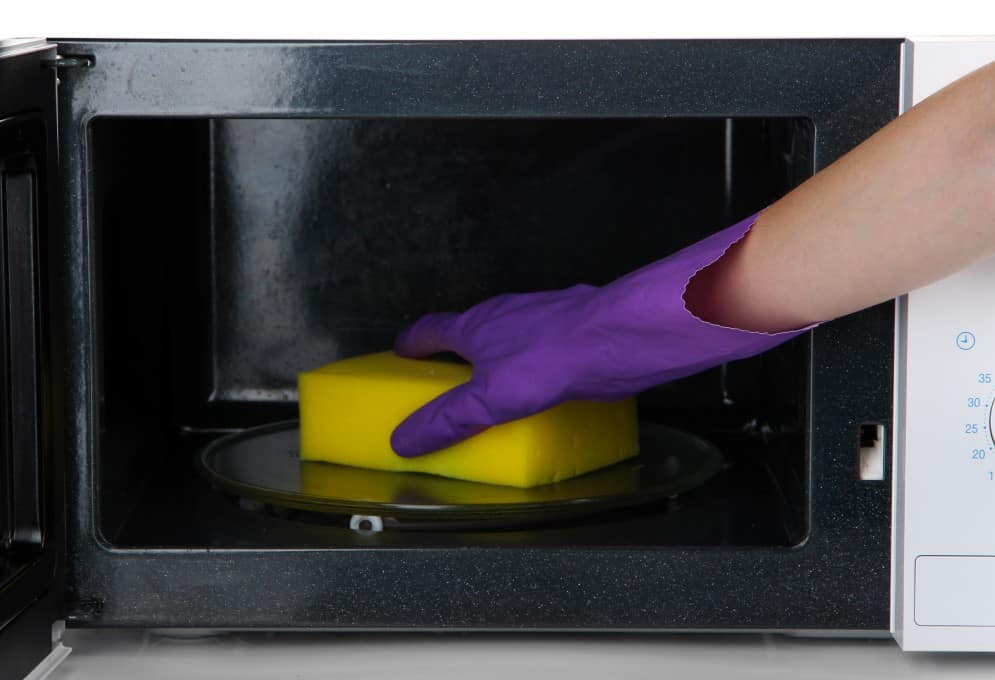 The goal of this level is
The goal of this level is
"To the table!"
"To the table!" The rhythm of the life of a French family is built around this sacred phrase, because the ritual of eating at a common table is the most important moment in learning good manners. It hardly needs to be reminded that the main dishes of French cuisine must be served and tasted
They put him at the table, and he put his feet on the table
They put him at the table, and he put his feet on the table It happens. We just can’t stand it, just to eat. And antics, and fidgeting in a chair, and a pigsty in a plate. Again, let's look into the dining room, where they dine in silence and peace, without quarrels and antics. But here is a two-year-old little girl acting up at the table,
2.3. Round table for teenagers: "How do friendships develop and sometimes break?"
2.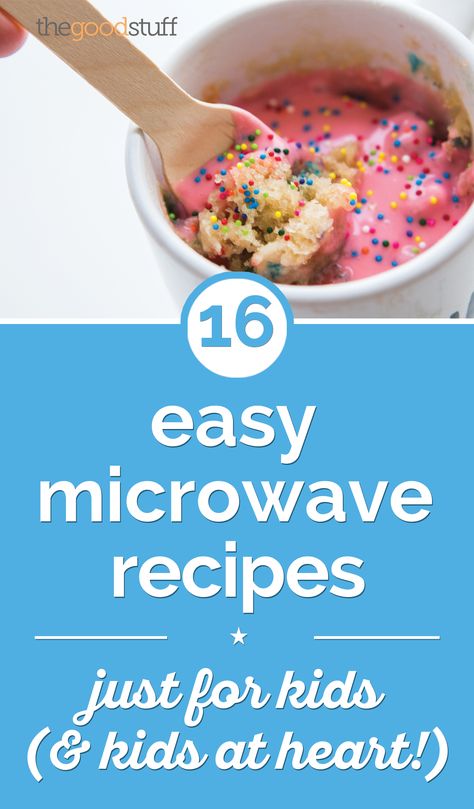 3. Round table for teenagers: "How do friendships develop and sometimes break?" For modern teenagers, it is more difficult to get to know each other even in the courtyard of the house on the playground than for the previous generation of children. Gone are many traditions of courtyard games, which in
3. Round table for teenagers: "How do friendships develop and sometimes break?" For modern teenagers, it is more difficult to get to know each other even in the courtyard of the house on the playground than for the previous generation of children. Gone are many traditions of courtyard games, which in
Help the nanny set the table
Help the nanny set the table They want to have breakfast in the group, Everyone around is in a hurry to help Carry dishes on the tables. Only the Hedgehog said: - I won't! I won't go, I'll sit And I will look at you! I don't want to help Better to just wait. It's unpleasant for everyone. All Hedgehog
Wash your hands before you sit down to eat
Before you sit down at the table, wash your hands On the birthday of the Frog Her friends gathered. frolicked, played And then they began to have lunch.

